We left muggy Memphis but, instead of turning north, we agreed to stick with our Alabama itinerary, to see a few touristy things along the way.
We ate pretty good BBQ at a Bait and tackle shop in Tupelo, sang some Van Morrison, and stopped at the Natchez Trace Visitor’s Center before heading to camp at a private RV park outside of Muscle Shoals.

After we settled in, we drove into the town of Florence, through the semi-abandoned downtown area, with whole blocks of boarded up storefronts. We passed the warehouse district near the Port of Florence and followed the signs through several old neighborhoods to Helen Keller’s birth house.

I enjoyed our tour guide, Miss Anne, who wore a ring with the Alabama quarter on it. The quarter features Helen Keller and it’s the only quarter with braille writing on it. She made the ring herself.
Miss Anne commented on the artwork on my t-shirt, two hands with the fingers making the shape of a heart, and she touched the white heart stone that hung from a silver chain around her neck.
She said, “The artist who made the marble sculpture outside of Helen and Annie at the pump made us all hearts from the leftover marble.”
After the museum we drove through the beautiful old neighborhoods with thick trees and just-cut lawns, oohing and aching at the mix of bungalows and farm houses, restored and gorgeous.
And then, right in the middle of the neighborhood, we pulled into a big parking lot of what used to be a church or school, that is now a visitor’s center for the famous Rosenbaum house built by Frank Lloyd Wright. We opted to skip the tour and just walk around the outside of the house.

It was dark wood, with well-disguised hinges and door handles. The house was a series of boxes with the expected panels of windows only at the tops of the room. The roof overhangs were especially low, and, being in the shadow of the mature summer trees, the house seemed like it would be very dark inside. I peeked through the windows and it was furnished just like Taliesin West, in Scottsdale, Arizona, with the low built-in bench seating covered with simple, solid colored cushions, and the same dining table and chairs.
One of my long-time Mac clients studied and worked with Frank Lloyd Wright and, at 88, is still active with the FLW Foundation. I emailed him a photo of the house, and his partner, a textile artist, replied that he had met Mrs. Rosenbaum many years ago in a weaving class. She was having trouble, and he helped her thread the loom. They became friends and my clients visited her in the house. He said, “She was quick to say that her son was conceived on their first night living in the house.” I doubt that information is included in the tour.
We marveled at the houses across the street, then continued driving through the neighborhoods, to a city park along the Tennessee River where I had considered camping. It was big and crowded, and I was delighted to see that the place we chose was much better.
We stopped at a second park and looked out over Pickwick Lake, the body of water created by the Wilson Dam. We drove through the Tennessee Valley Authority complex, following the brown signs for the Alabama Bird Trail, and parked at the trailhead for a short nature loop. Marika was content to watch the thrushes in the trees in the parking lot, and I followed the trail into the forest. But after a few yards in, I was suddenly too hot and sticky, so I turned around and found a bench under a tree with a view of the water, and watched a family packing up their picnic lunch.
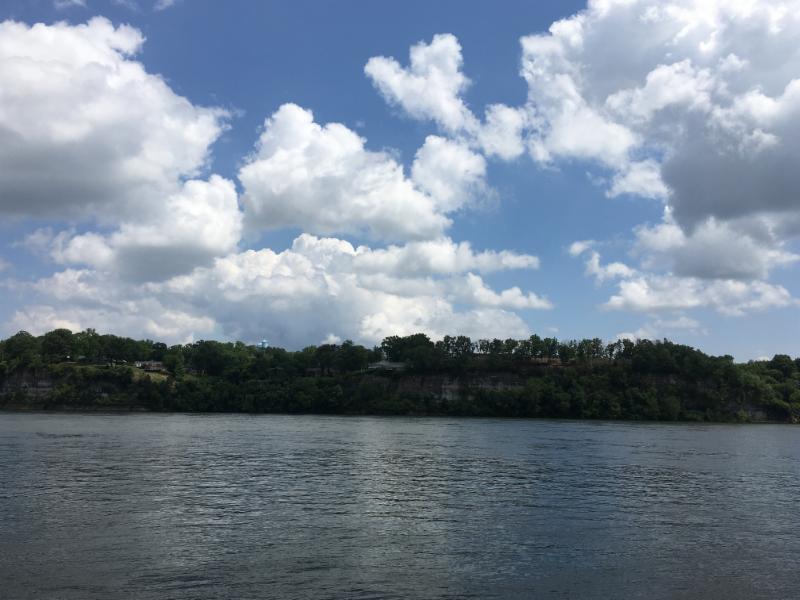
The next day we drove an hour, met a friend for lunch, then drove another hour to our county park campground where we quickly set up camp and then headed out to the Unclaimed Baggage Store. The store is a giant thrift store, clean, bright and neatly organized, with all kinds of clothing, jewelry, and stuff that folks have lost in their travels. I found a lovely pair of sterling silver earrings.

After a quick overnight, we drove to Oak Ridge, Tennessee, the secret city from WWII. The city of Oak Ridge was built as part of the Manhattan Project, to find ways to separate plutonium and uranium to make an atomic bomb. It was fascinating to hear about the lives of the workers living in a city surrounded by fences, forbidden to talk with each other about their work. We took the bus tour around the facilities and even saw the Graphite Nuclear Reactor.
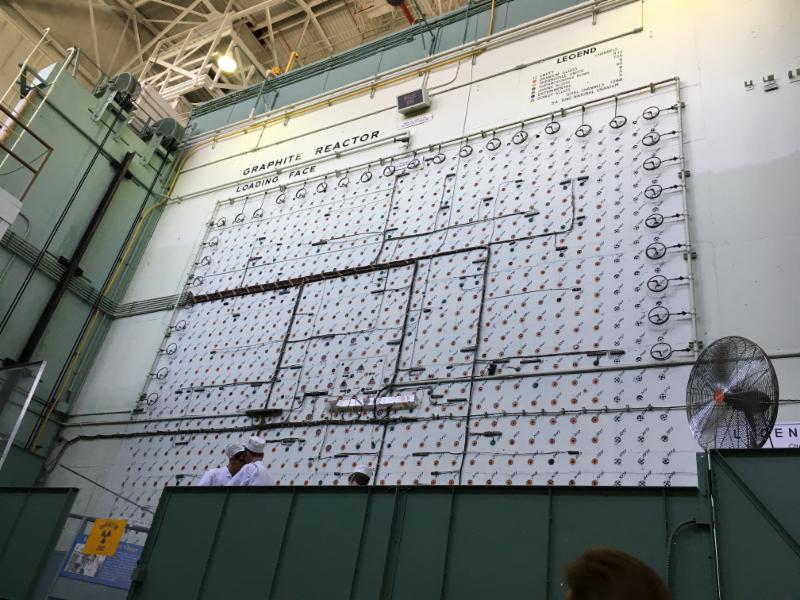
We spent a full morning at the Museum of Appalachia, built and curated by a man who collected millions of artifacts and had original cabins and buildings moved to this property so you really get a feel for life back then!
All around the grounds, there are original wooden shack houses with 1.5 inch thick wooden floor planks as wide as a tree, a schoolhouse, a church, blacksmith and saddlery, jail cells, even Mark Twain’s family cabin, most filled with the original furnishings from the structure when it was found.
There were carved out wooden troughs used for salting pork, and three-foot wide metal bowls used to filter salt out of the water they had to carry from 20 miles away.
We read stories of the people of Eastern Tennessee in the late 1800’s through the 1960’s, many matched up to photographs of the teller. There were rooms filled with homemade banjos and dulcimers, cloth dolls and dinner-calling horns. There were whittled tools and toys and animals, and a room with caskets and a carved, wooden, horse-drawn hearse.
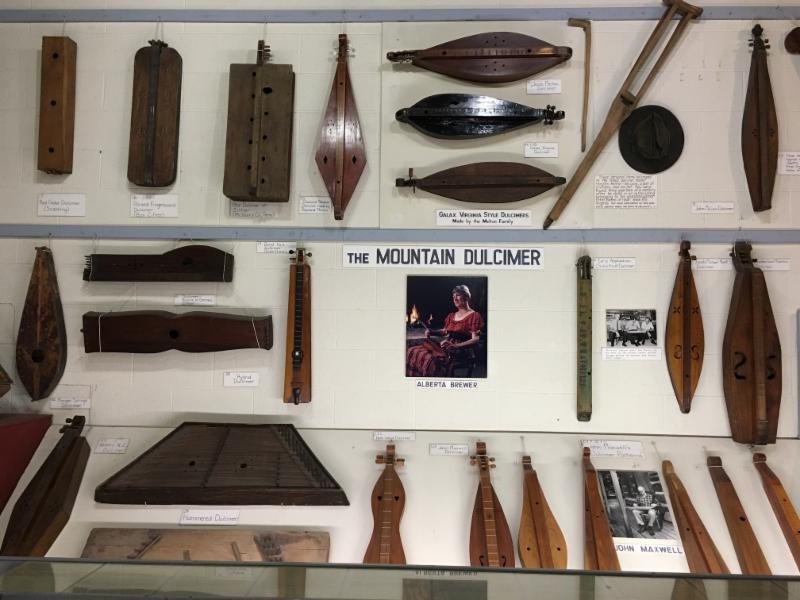
Each display was documented with printed signs and handwritten notes, initialed in the corner, as if to verify their authenticity.
The cafe there served lunch, and Marika had her first pimento cheese sandwich, which she enjoyed.
After lunch we went to the Green McAdoo Cultural Center to learn about the Clinton 12, 12 black students who went to the local white high school in the fall of 1956, when desegregation became the law.
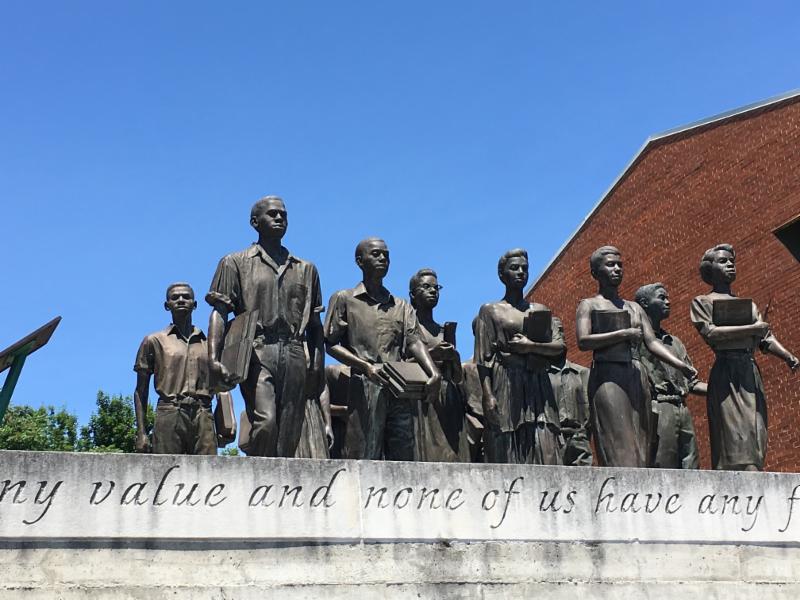
We talked with Miriam, the docent who was born after segregation. When Marika asked if she preferred being called Black or African American, she said, “I like black. African American implies that we had a choice. And nobody from Africa back then had no choice.”
Marika asked if things were any different now and Miriam said, “You know who likes you and who doesn’t. There’s no hiding it anymore. Just last month there was a Ku Klux Klan rally in Knoxville.”
And now we are in Virginia, slowly making our way north through the rolling green of the Shenandoah Valley. We visited the Edith Bolling Wilson Museum in Wytheville, pronounced Withville, and learned about the 35th First Lady, married to Woodrow Wilson. We bought fresh ground beef and lettuces at a small farmers’ market, and watched hundred of robins around the campground.
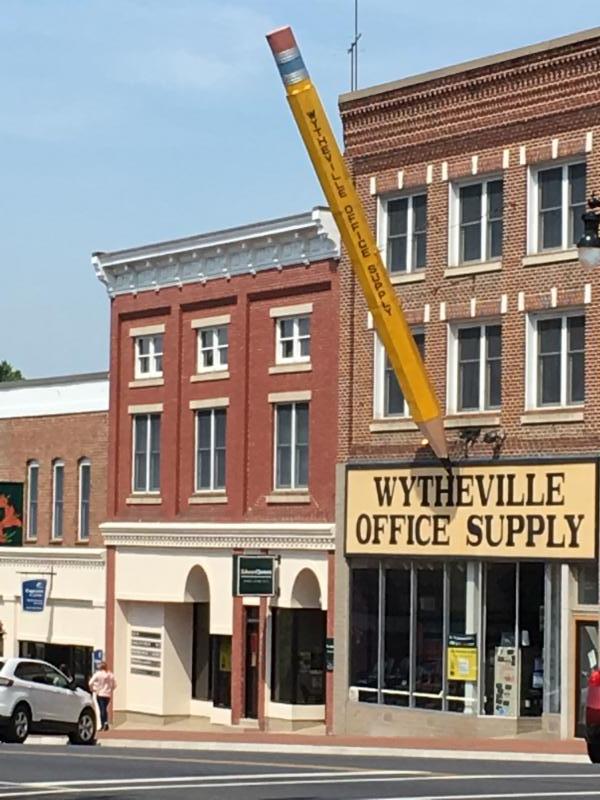
The temperatures are cooler, and, even with the rains, it is less muggy. Yesterday I even wore a sweatshirt!
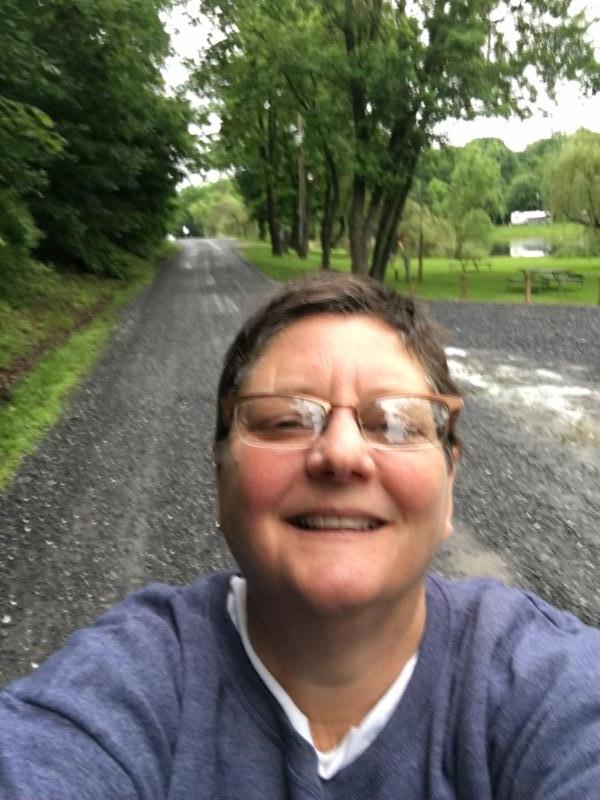
Today, we’re just hanging out. Even though there are touristy things all around, sometimes we just need to have a day at home, to relax, regroup, and just be. Tomorrow we’re getting together with a friend from Camp, then continuing north toward the Poconos fo a week before heading to New Jersey.
I can’t believe we’ll be working at our summer volunteer gig in just a few weeks, parked in one place for three whole months. It will be such a change of pace and rhythms and scenery. This is one of the many things we love about living on the road.
